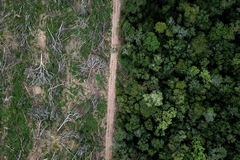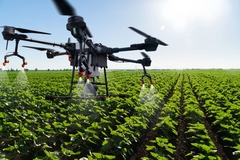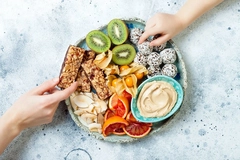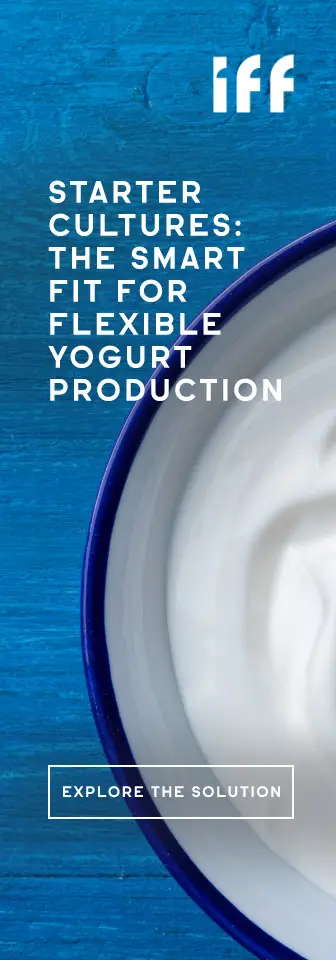Microplastics found in agricultural soil and food systems, FAO study flags
08 Dec 2021 --- The Food and Agriculture Organization of the United Nations (FAO) is calling on food sectors to take action and manage practices that incorporate plastic, following the release of a new report on plastic contamination in agricultural land.
The report underscores how land used to grow food is contaminated with far larger quantities of plastic pollution, posing a significant threat to food security, human health and the environment.
Most scientific research on plastics pollution has been directed at aquatic ecosystems, especially oceans; however, FAO experts find agricultural soils receive far more significant quantities of microplastics.
The presence of microplastics and nanoplastics is highest on the agenda to be eradicated from the value chain.

“The food and beverage industry can have an important role to play in contributing to the sustainable management of agricultural plastics. Some actions include: designing, developing and marketing certified products to meet the required standards,” Lev Neretin, workstream lead, environment, FAO tells FoodIngredientsFirst.
Plastics permeate the agri value chain
The fact that 93% of global agricultural activity takes place on land makes these new statistics even more significant. Recent studies detected traces of microplastic particles in human feces and placentas. According to the FAO, there is also evidence of mother-to-fetus transmission of much smaller nanoplastics in rats.
The report, “Assessment of agricultural plastics and their sustainability: a call for action,” – is the first global report of its kind by FAO and contains some startling numbers. The information was presented at a virtual event in conjunction with World Soil Day.
“We will continue to play an important role in dealing with the issue of agricultural plastics holistically within the context of food security, nutrition, food safety, biodiversity and sustainable agriculture,” says Semedo. To help mitigate the severe plastic problem in agrifood systems, FAO’s report identifies solutions based on the 6R model, “refuse, redesign, reduce, reuse, recycle and recover.”
To help mitigate the severe plastic problem in agrifood systems, FAO’s report identifies solutions based on the 6R model, “refuse, redesign, reduce, reuse, recycle and recover.”
Data collated by the agency’s experts show that agricultural value chains use 12.5 million metric tons of plastic products annually.
A further 37.3 million metric tons are used in food packaging.
The crop production and livestock sectors were the most significant users, collectively accounting for 10.2 million metric tons per year, followed by fisheries and aquaculture with 2.1 million tons, and forestry with 0.2 million tons.
Asia is estimated to be the largest user of plastics in agricultural production, accounting for almost half of global usage.
In the absence of viable alternatives, demand for plastic in agriculture is only set to increase. Global demand for greenhouse, mulching and silage films will increase by 50%, from 6.1 million tons tallied in 2018 to 9.5 million metric tons in 2030.
Neretin urges food industry businesses to meet requirements for circularity with the use of recycled materials. Maintaining and reporting information to monitor the movement of products through the supply chain has also been recommended.
Businesses have also been urged to fund and organize Extended Producer Responsibility (EPR) schemes with other actors in the supply chain for the free collection of used plastic products.
Deep-rooted dependency on plastics
Since the 1950s, plastics have become an essential part of modern-day life. In agriculture specifically, plastic products help with productivity. Mulch films, for example, are used to cover the soil to reduce weed growth, the need for pesticides, fertilizer and irrigation.
Plastic nets protect and boost plant growth, extend cropping seasons and increase yields.
Plastic tree guards protect young seedlings and saplings against damage by animals and provide a microclimate that enhances growth.
Moreover, plastic products help reduce food waste and maintain their nutritional qualities throughout various value chains. The FAO reports that it helps improve food security and reduce greenhouse gas (GHG) emissions.
However, when plastics reach the end of the life cycle, they pose significant problems to man and the environment.
The diversity of polymers and additives blended into plastics makes sorting and recycling more difficult. There are very few microorganisms capable of degrading polymers so that they may fragment and remain there once in the environment for decades.
Of the estimated 6.3 billion metric tons of plastics produced up to 2015, almost 80% have not been disposed of properly.
As plastics begin to disintegrate, their impacts start to be exerted at the cellular level.
Consumers are encouraged to favor sustainable labelled foods and beverages. Complimentary to this are the standards for good agricultural practice set by private sector bodies, against which agricultural producers can be controlled and certified.”
“Everyone has a role to play in this: consumers need to make informed decisions on the foods they purchase, being mindful of challenges such as those we have illustrated in our report,” outlines Neretin.
“Private sector needs to bring products to the market that are safe and conform with labels. National authorities need to provide the regulatory oversight and control needed to verify the conformity of products,” urges Neretin.
“6R model” solution identified
The diversity of polymers and additives blended into plastics makes sorting and recycling more difficult. The diversity of polymers and additives blended into plastics makes sorting and recycling more difficult.
The diversity of polymers and additives blended into plastics makes sorting and recycling more difficult.
FAO’s report identifies solutions based on the 6R model, “refuse, redesign, reduce, reuse, recycle and recover,” to help mitigate the severe plastic problem in agrifood systems.
Agricultural plastic products with a high potential for environmental harm need to be targeted and removed from the value chain. These include non-biodegradable polymer-coated fertilizers and mulching films.
The report also recommends developing a comprehensive voluntary code of conduct to cover all aspects of plastics throughout agrifood value chains and calls for more research on the health impact of micro and nanoplastics.
Efforts are underway to reel in the plastic problem. For example, scientists from the University of Edinburgh previously developed a way to use plastic waste as a food industry resource by converting post-consumer PET into vanillin via a series of chemical reactions.
As far back as 2018, organizations tried to alert people to the problem. The UK Plastics Pact aimed to eradicate single-use plastic waste from the supply chain and was signed by more than 40 major players in the food and non-food industry. UK retailers, Tesco, Sainsbury’s, Morrisons and Waitrose, were supporting the pledge.
Edited by Inga de Jong












